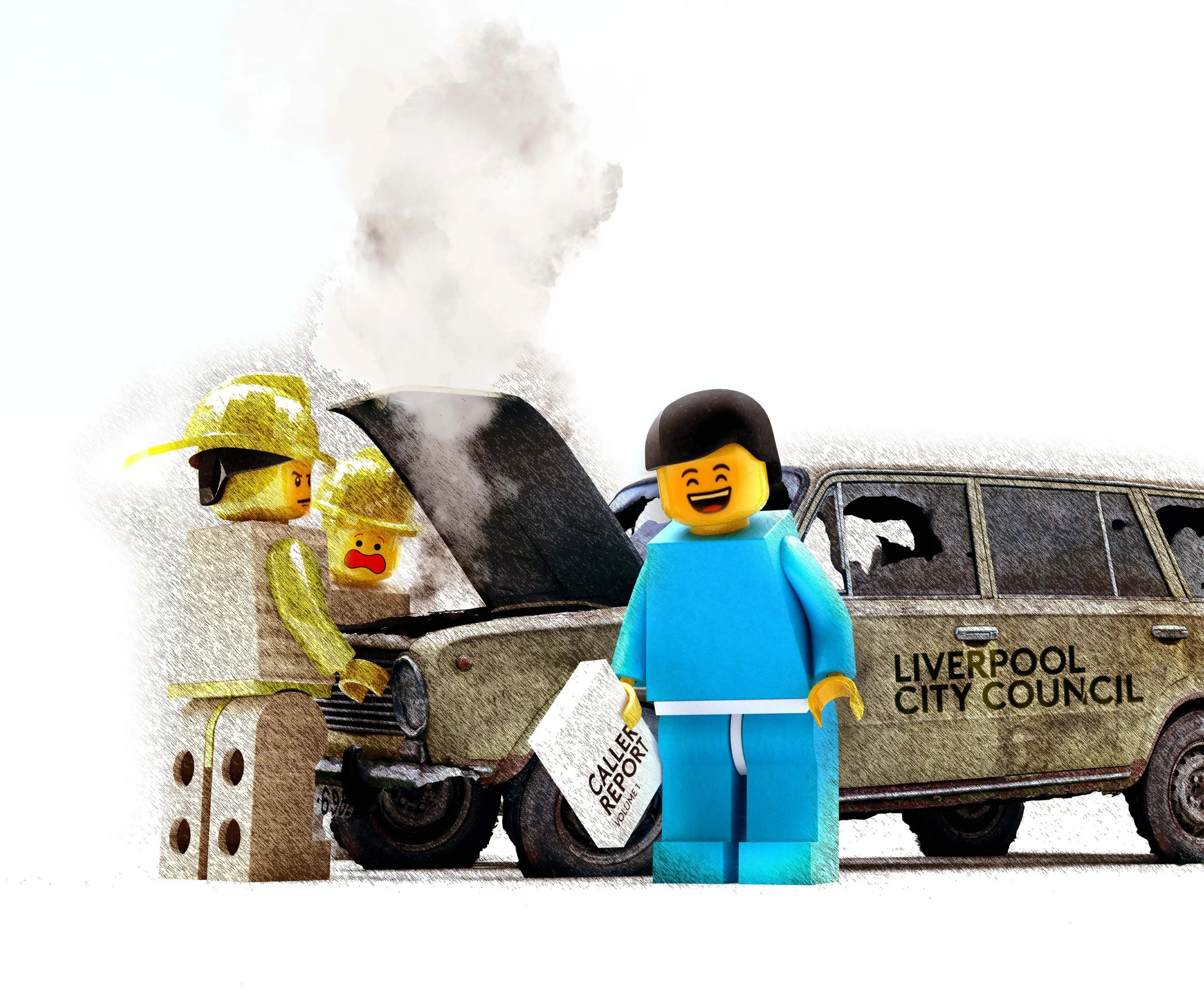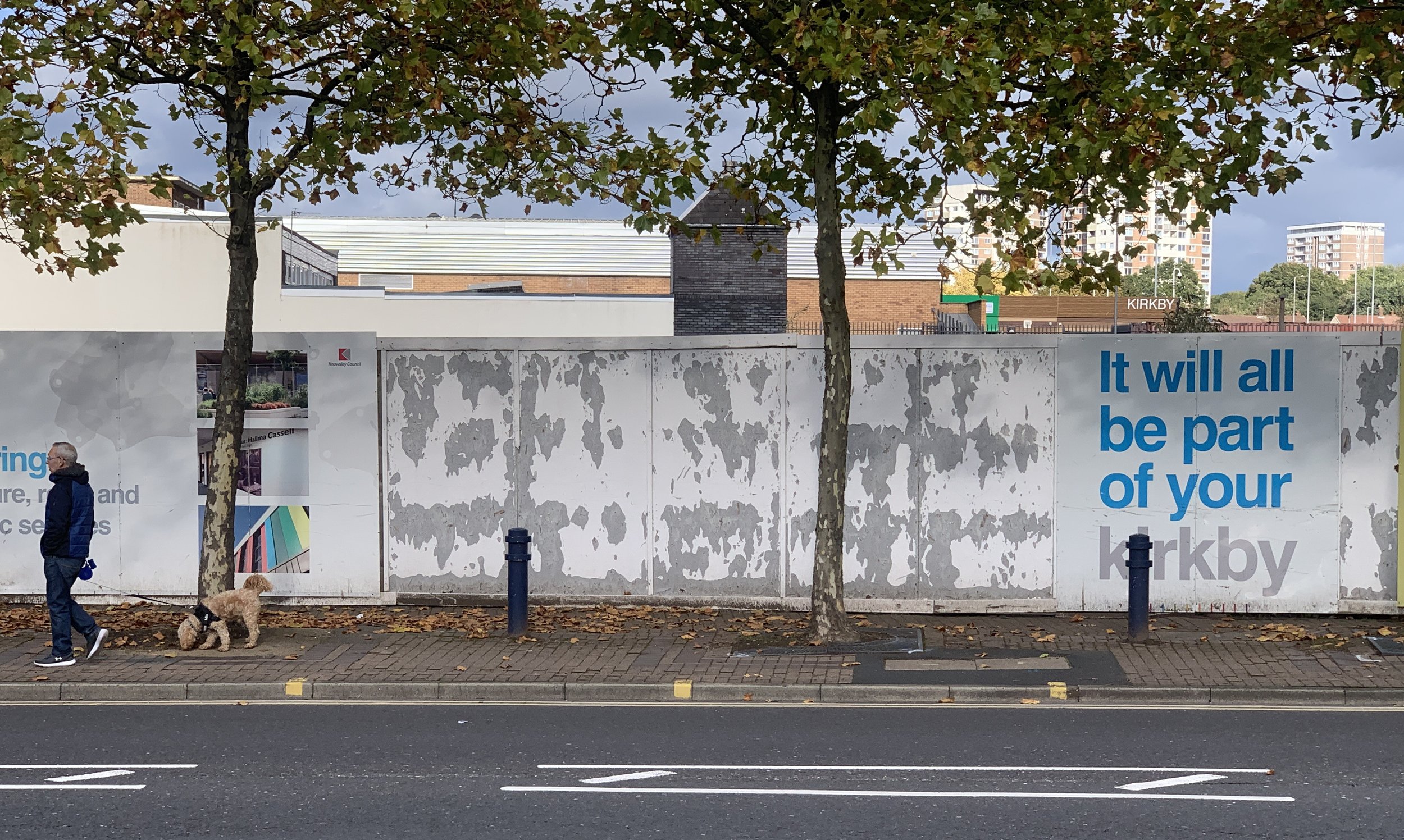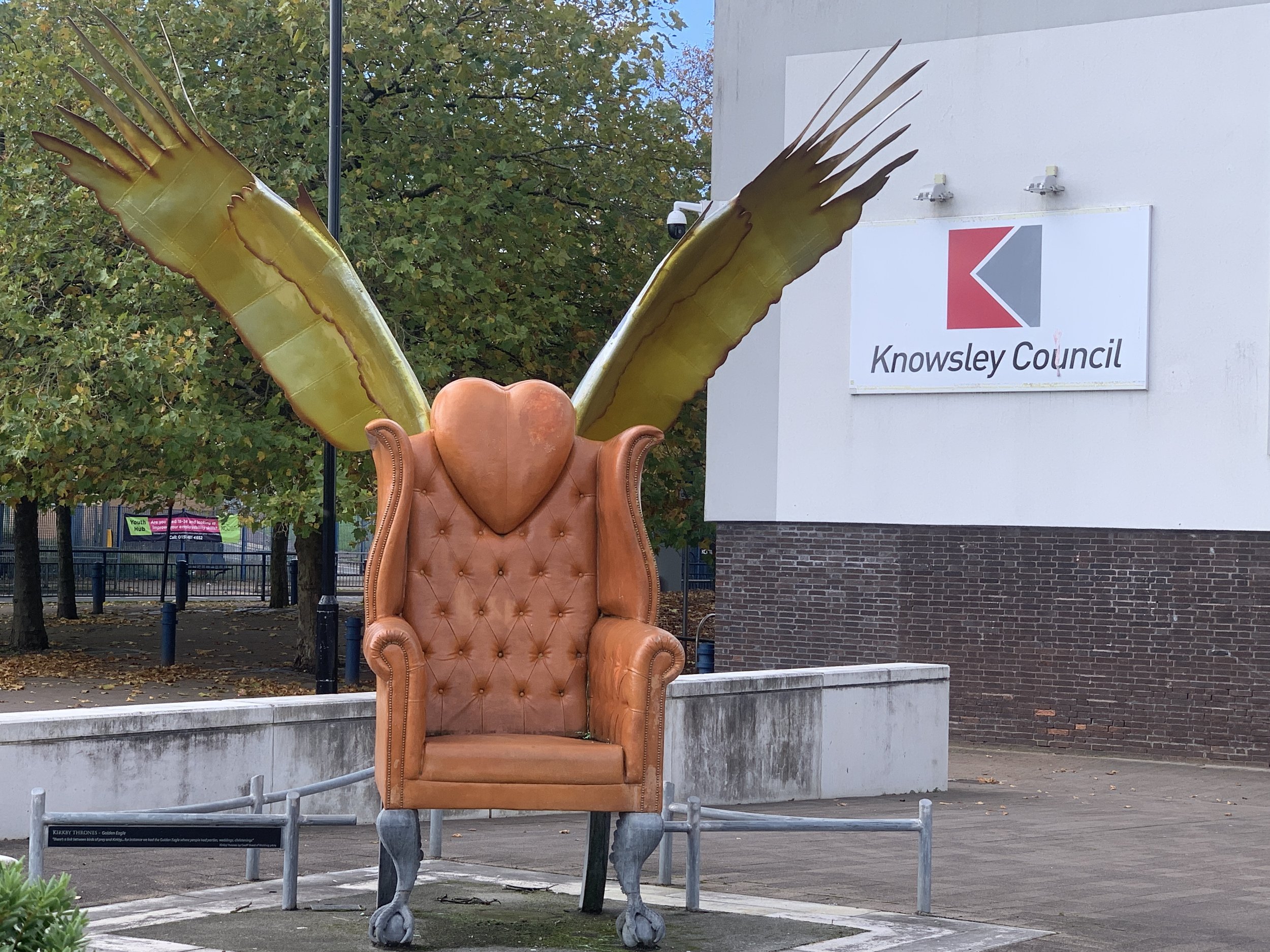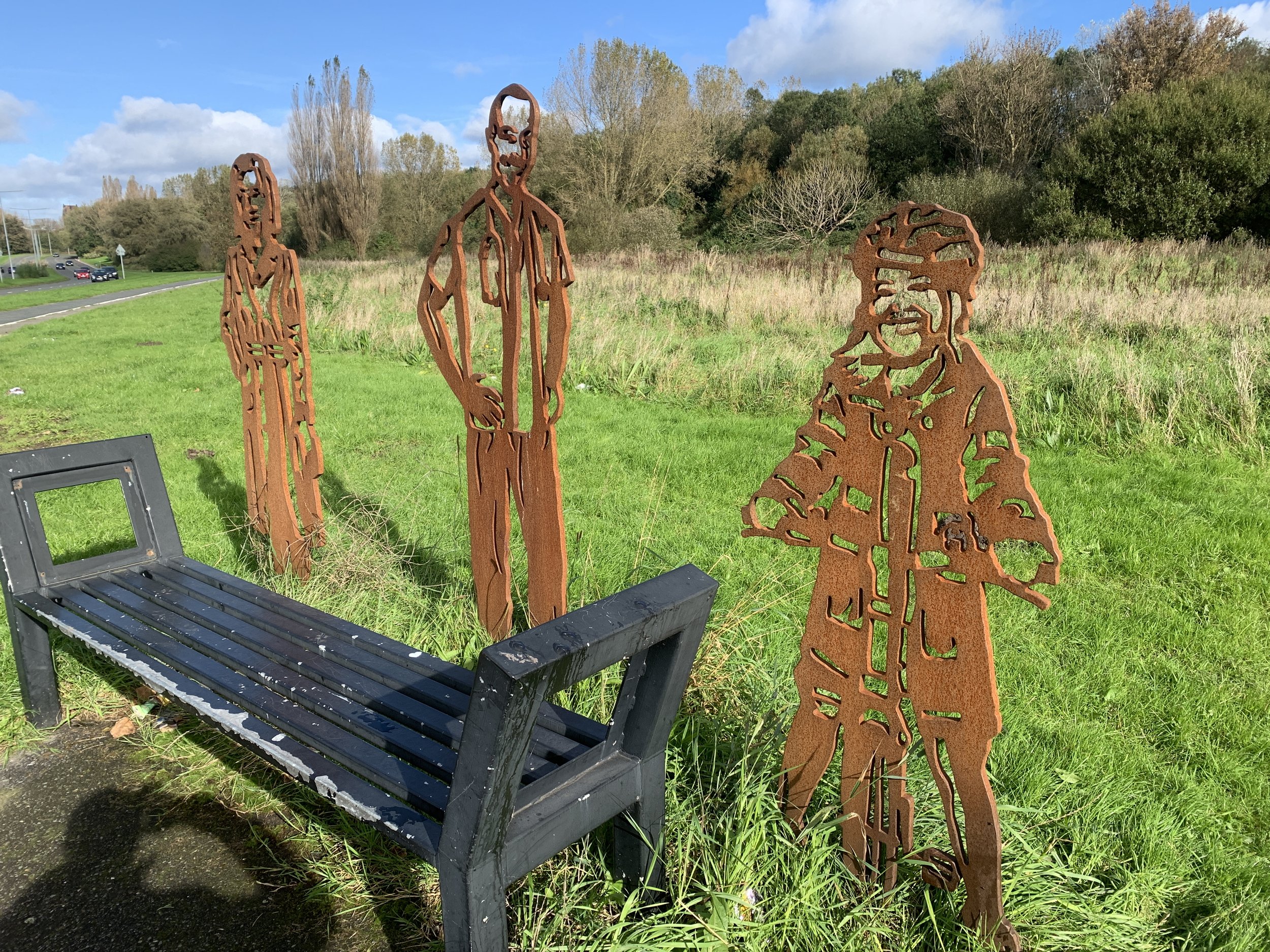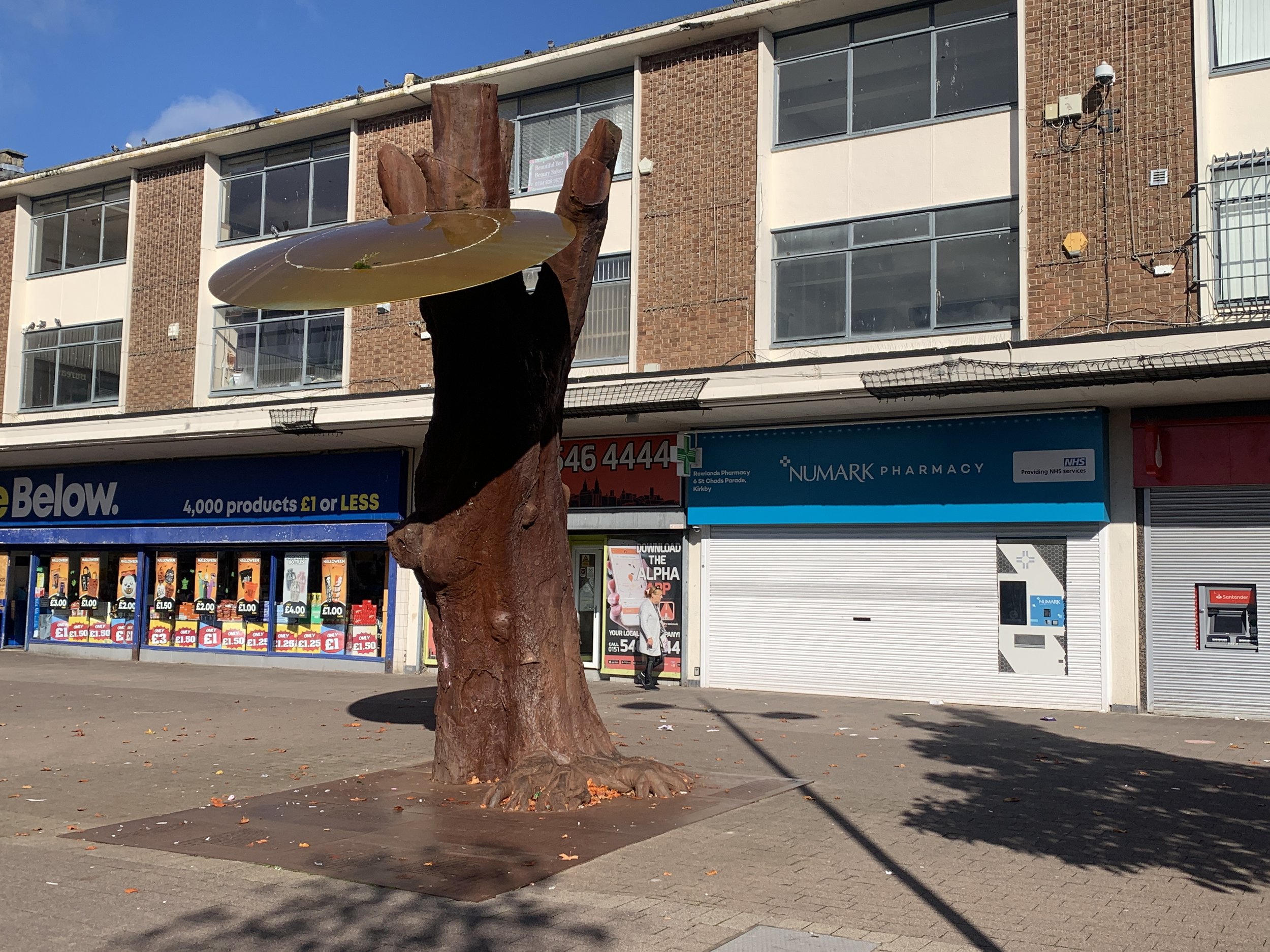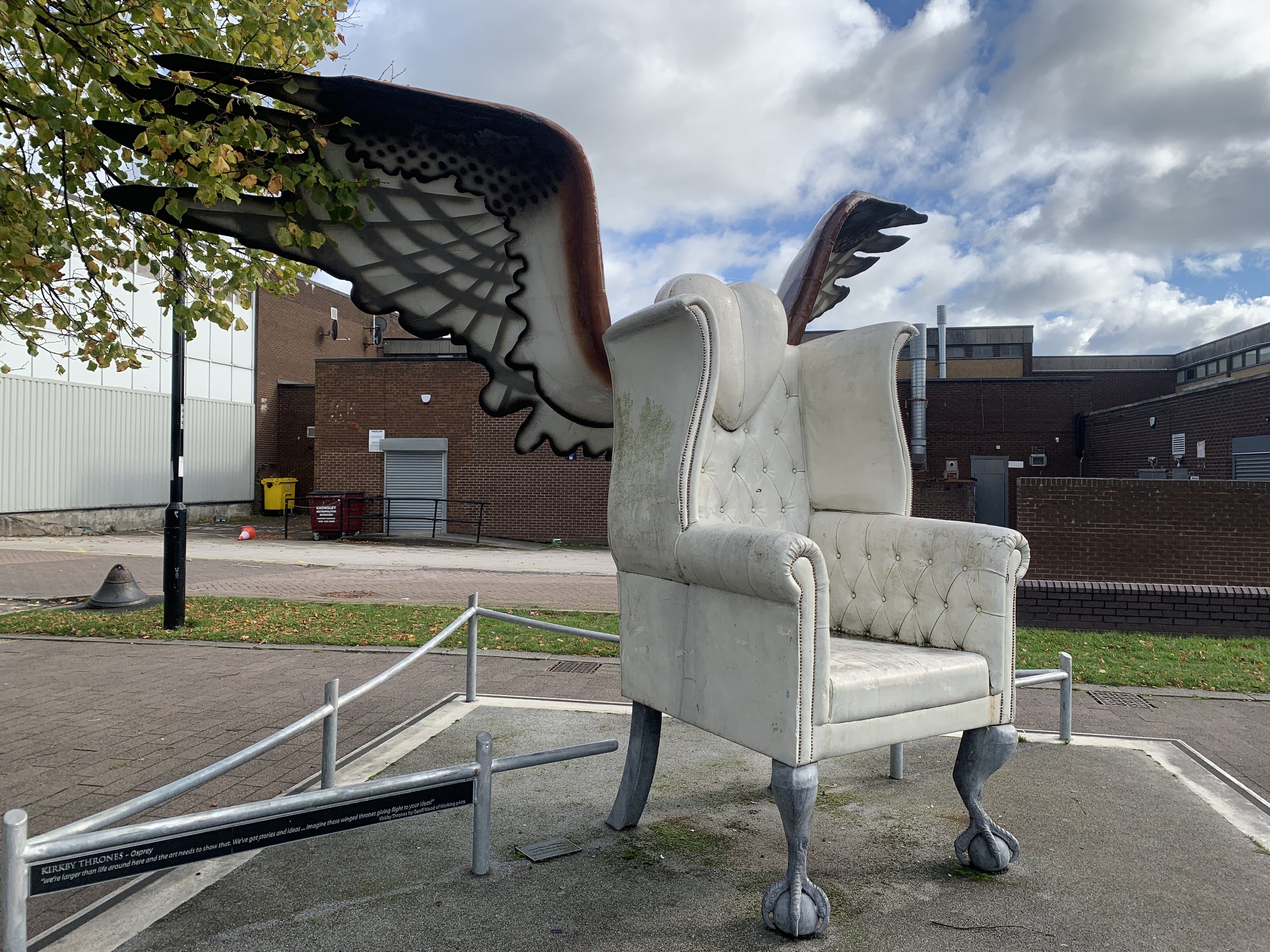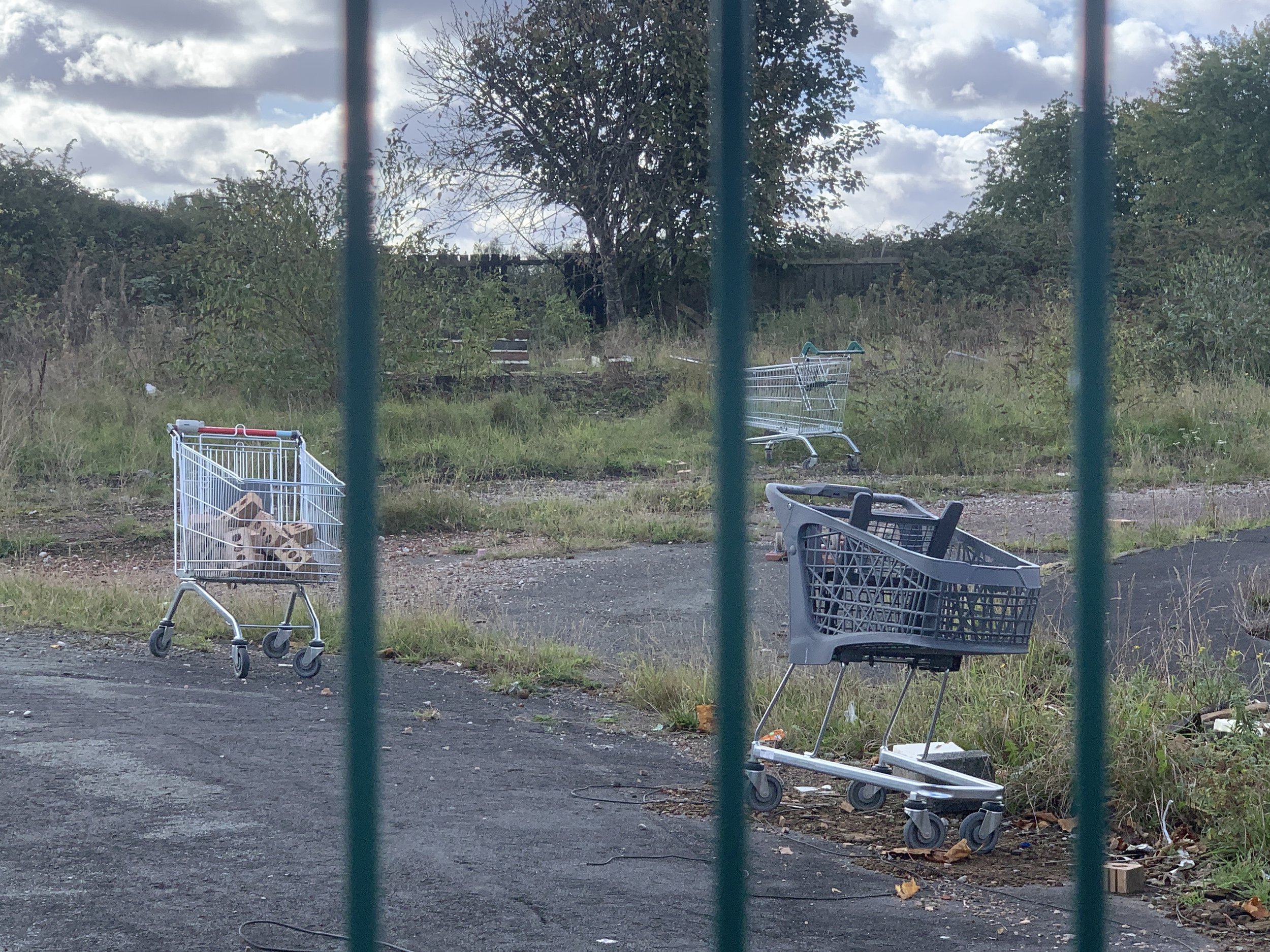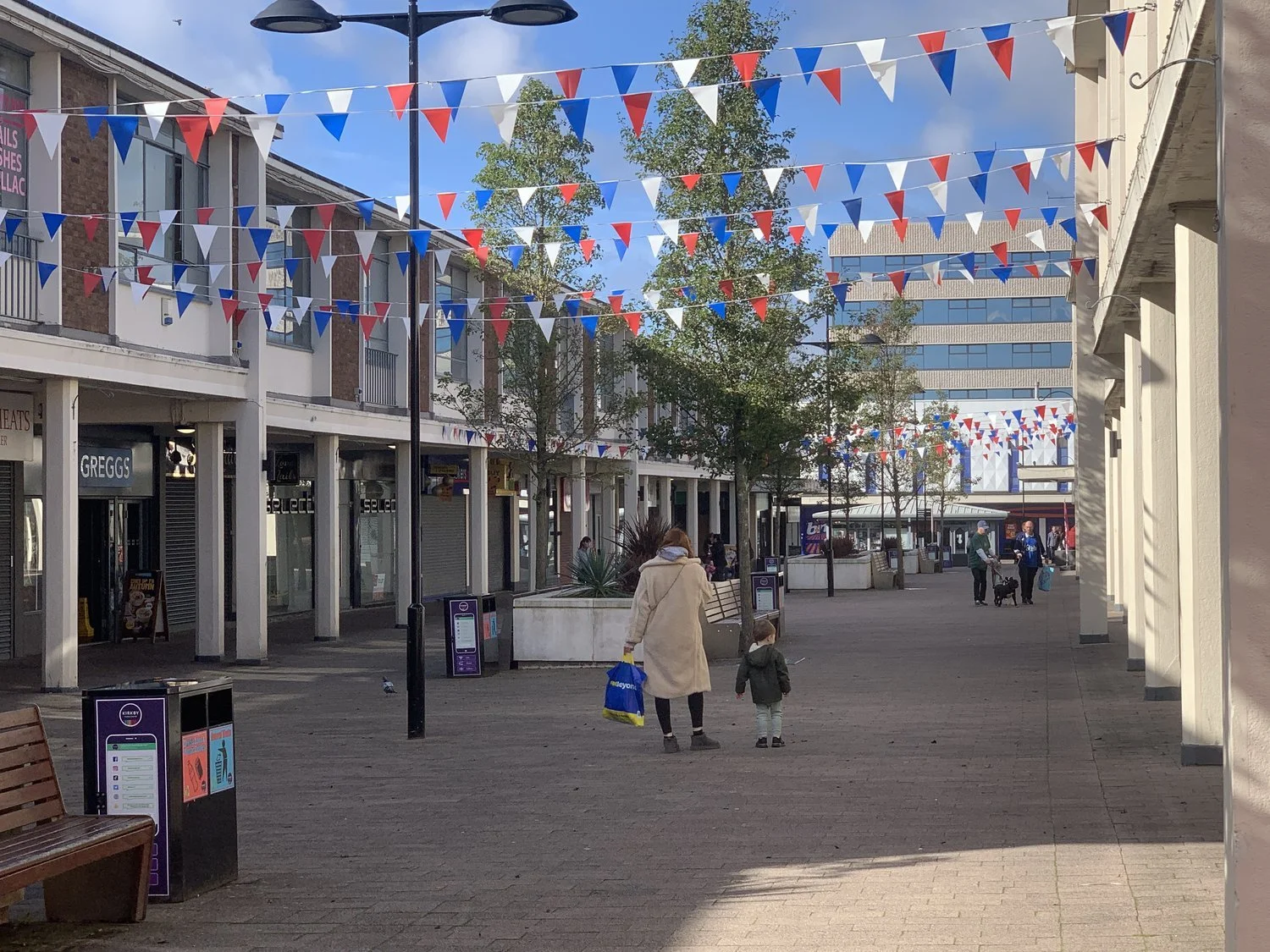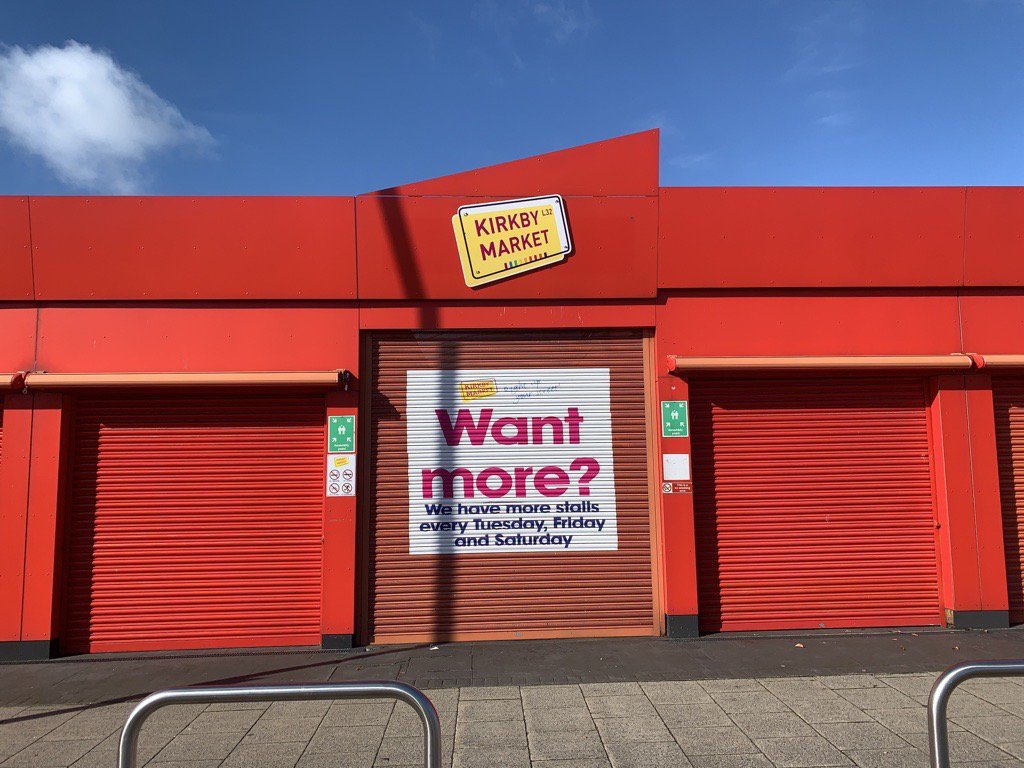Recent features
Genghis Khan, Kirkby Market and me
Since the 1990s, the town of Kirkby, a suburb of Liverpool has undergone a continuous cycle of demolition and reconstruction. The changes, though well intentioned, have largely failed to address Kirkby's social problems or arrest the high rates of deprivation. Regeneration expert, John P. Houghton, who was raised in the town, recounts Kirkby's regeneration history and argues that the social cost of change has often not been worth the price.
John P. Houghton
From rural village to manufacturing powerhouse to struggling suburban overspill, Kirkby has had a chequered history. Just 6 miles from Liverpool, in the borough of Knowsley, the town was once the inspiration for the TV show Z-Cars, a police procedural majoring on social realism in gritty estates.
In recent years, Kirkby has seen some degree of investment, from new housing and schools to a brand new market and health centre, and it recently acquired a new train station. Artwork is layered around the town’s centre including winged chairs and a wise, old elephant riding a Viking longboat. But the picture remains mixed. Hope for better rubs shoulders with as yet unfulfilled promises, marked by peeling hoardings and discarded shopping trolleys. The one thing you can say for sure is that Kirkby is increasingly unrecognisable, with planners consistently favouring demolition and rebuild over subtler forms of intervention.
One man who would know is John P. Houghton, a regeneration expert who grew up in the town. In this article, he argues that the hard lessons from Kirkby’s past need to be applied to its future - that people should come before property. John believes keeping communities together and repairing the social fabric is better than constantly demolishing and rebuilding estates…
In the year 1218, the Shah of Khwarezmia made one of the worst decisions in all of human history; he picked a fight with Genghis Khan.
The Mongol leader had made a tentative peace-with-trade offer to the Shah, the ruler of a vast Central Asian empire, by sending a caravan of ambassadors to negotiate an agreement that would allow both medieval superpowers to co-exist. In response, the Shah killed the emissaries. Khan was so enraged by this act of provocation, he immediately declared war on the Khwarezmian empire and its unwise leader. Victory on the battlefield was swift, although the Shah himself escaped and fled.
Without his enemy’s body for proof of his conquest, Khan ordered his men to the Shah’s hometown, where they demolished and dismantled every single building until no structure was left standing. Even this was not enough to satisfy Khan’s desire for retribution.
His troops went on to re-direct a local river through the place where the town once stood, washing away the last stumps of human settlement and wiping the Shah’s birthplace from the map.
While the course of Merseyside’s River Alt is probably safe, I sometimes wonder if I’ve done anything to provoke similar wrath from the planning department that oversees my hometown of Kirkby in Knowsley. Let’s look at the historical record.
Here’s a list of the now-demolished buildings that played an important part in my early life: the estate where I was born and lived to the age of four; my infant school; my junior school; my secondary school; the church where I took my first Holy Communion; the swimming baths where I dived for rubberised bricks in my pyjamas; the sports centre with its infamous ski slope; the library; he college where I did my first work experience on the local newspaper; and the ‘Mercer Heights’ tower block where my uncle lived which offered views all the way to the Mersey.
One of the few buildings from my childhood still left standing is the house where I lived until I left for university at the age of 18. But don’t get your hopes up; this is not a pinprick of light amongst the darkness. The place I called home will make an unhappy appearance later in this story.
Tales of bloody vengeance aside, there is perhaps another explanation why my hometown has been involved in this seemingly endless cycle of estate clearance and re-construction. It’s an explanation that exposes the folly of putting property before people.
To understand that story, we need to take a look at the history of Kirkby.
Kirkby has seen investment in recent years but vast tracks of land are still hidden behind ageing hoardings. A local resident complained about ‘broken promises’ over a new cinema. Image: Liverpolitan
Over-spill
In 1951, Kirkby was a village of 3,000 people on the eastern fringe of Liverpool. Nearby, the government had built the Royal Ordnance factory to supply munitions to British troops during World War II. This had seen an influx of 20,000 temporary workers during those war years but the village itself had remained largely unchanged, with its rural economy sustained by the fertile soil of the surrounding farmland. But all of that was about to change utterly and at phenomenal speed. In the years that followed, Kirkby would grow at a pace barely seen in England since the Industrial Revolution.
The transformation was driven by the UK’s post-1945 approach to urban and economic development. As in other places such as Coventry and Plymouth, vast tracts of Liverpool had been destroyed or heavily damaged by the German Luftwaffe. For urban planners facing the challenge of rehousing both industry and tens of thousands of workers this opened up untold opportunities to realise their utopian civic dreams.
Post-war government policy subsidised clean-sweep demolition and the dispersal of populations out of cramped, bomb-ravaged city centres and into gleaming, structured ‘new towns’. Kirkby, with its ample land, brief flirtation with mass production and proximity to the city, was viewed as a prime spot to begin construction.
“The people who created Kirkby could build houses, but chronically undervalued the importance of ‘third places’, where people of all ages can rest, relax and play.”
Southdene was the first estate to be built in the new town in 1952, and was followed by many, many more. Although, as we’ll see, it took longer to deliver social and cultural amenities than it did new houses; the first shops were not opened until 1955, while the first pub only began serving in 1959. Kirkby Market started trading a year later.
By 1961, the population had rocketed from 3,000 a decade earlier to 52,000; a seventeen-fold increase in ten years. My grandparents, as children, were part of this vast wave of managed migration. Young families were attracted not only by the prospect of a home with a garden, but good chances of employment too. Liverpool City Council had bought the old Royal Ordnance site and working with factory owners and manufacturers had redeveloped it as Kirkby Industrial Estate. The future looked rosy.
However, the immediate problem on “Merseyside’s largest over-spill estate” was the absence of social infrastructure or, in simpler terms, the lack of anything to do outside of the house. Especially for the huge numbers of young people who lived there.
Tower blocks like Mercer Heights have been disappearing for years. But the new housing has merit if not the same great views. It will, however, take time to build back a lost sense of community. Image: Liverpolitan
“For building’s sake”
By the early 1960s, virtually half (48%) of the Kirkby population was aged under 15. The average for England was just over a quarter (27%). If you find buses or trains quite noisy when half the passengers are school kids, imagine an entire town like that. All of the time, with practically nothing for them to do.
Demographic imbalances are understandable in the post-war context. After all, around 880,000 British soldiers, or 6% of the nation’s adult male population, had shed blood on the battlefield in WW1. Another 384,000 died in WW2.
Less comprehensible is the failure to anticipate the consequences of concentrating thousands of families in a new town without support structures or social amenities. In his blog piece, New Jerusalem Goes Wrong, John Boughton cites a 1965 article in The Times: “no-one has yet built a cinema or dance hall and, possibly for this kind of reason, the 13 and 14-year old are the town’s most frequent law-breakers.”
On the same theme, one resident complained of the local council that “all they’ve built for is building’s sake but not to take the children into consideration. Have a look around here, where on earth can children play?” The people who created Kirkby new town could build houses, but chronically undervalued the importance of ‘third places’; spaces outside the home and workplace where people of all ages can rest, relax and play.
Even reforms to how the town was governed failed to deliver a change in thinking. The Kirkby Urban District, which had been established in 1958, was abolished in 1974 and merged with nearby authorities to form the Metropolitan Borough of Knowsley.
The new structure delivered the same old emphasis on volume housebuilding at the expense of essential infrastructure. Perhaps the new authority’s ambitions were thwarted by an infamous episode in Kirkby’s history.
Sloping off
The new Borough council may have been put off the idea of building anything other than houses by the experience of trying to instal a ski slope in the grounds of Kirkby sports centre. This is one of the oddest, and still most mysterious examples of urban misadventure in England’s post-war history.
The idea, first formulated in a smoky pub in 1973, was to offer residents the chance to get some exercise by emulating the professionals on the BBC’s popular winter sports show, Ski Sunday. In reality, neither the planners nor the contractors knew how to build a ski slope in a built-up urban environment. This most basic fact may have been exposed if the building contract had been put out for open and competitive tender. However, due process was almost completely ignored as deals were done over lunchtime drinks.
“An internal inquiry at the council, found that the [ski] slope had been built “without planning permission, over a water main, on land the council didn’t own. Due process was almost completely ignored as deals were done over lunchtime drinks.”
Costs spiralled as, during safety trials, both people and parts of the slope kept falling off. This required the addition of boundary fencing and frenzied attempts to ‘de-bump’ the surface; all to no avail.
The bumps may have been caused by the “haphazard collection of builders’ rubble” used to make the mound, according to a jaw-dropping BBC Nationwide investigation. This prompted an internal inquiry at the council, which found that the slope had been built “without planning permission, over a water main, on land the council didn’t own.”
The worst allegation was that the slope had been built the wrong way around, threatening to send terrified skiers into the path of oncoming traffic on the M57 motorway. Amid howls of derision, and before it was completed, the council stopped further construction in 1975 and, you guessed it, knocked it down.
Unlike the Kirkby skiers, the local economy was initially heading in the right direction. The teenagers may have been bored, but the adults were kept busy. With a new workforce and modern factory plants, the early years of the town were an economic success story. By 1967, Kirkby Industrial Estate supported a mammoth 25,000 jobs. After the youthful exuberance of the 1960s, however, came the strife of the 1970s and 1980s.
Art designed to lift the spirits has been widely used around Kirkby. Some pieces are more successful than others. It’s unlikely the shopping trolleys were deemed worthy of a public commission, but their presence still speaks powerfully and artistically. Image: Liverpolitan
Demolition and depopulation
In 1971, the Ford factory at Halewood, south Liverpool, where my dad worked on the assembly line, laid off 1,000 workers in the middle of a strike over pay and conditions. Many more redundancies followed as factories were shuttered and workforces shrank in the face of competition and technological advancement. This included factories in Kirkby such as Thorn Electrical, which closed with the loss of 600 jobs.
By 1981 almost a quarter (22.6%) of Liverpool’s working-age population was unemployed. For the rest of that decade, and into the 1990s, Kirkby was trapped in a self-reinforcing cycle of job loss and population decline. The residents of the new town had been promised a New Jerusalem. In reality, as one Liverpool Echo report succinctly summarised, they were “let down by central government planners, corrupt councillors and the private sector alike”.
The loss of jobs and households was exacerbated by the council’s decision to use demolition as a primary response to neighbourhood decline. The BBC paid another visit to Kirkby in 1982, to report on the demolition of a large estate in Tower Hill.
As the newsreader Jan Leeming explained, the development had been built “only twelve years ago” but, according to the council, had proven unpopular and stood completely empty for the last two of those years.
As the estate is dynamited, the camera's unforgiving lens focuses on the destruction and the reporter reveals an equally devastating fact. The council will continue paying for the development for another forty years.
There was, no doubt, a case for demolishing the most unpopular and poorly-built developments, but in Kirkby, as elsewhere, widespread demolition became a self-perpetuating cycle; damaging the environment, breaking up communities, and effectively admitting failure in the task of making a decent place for people to live.
Demolishing entire estates also entailed the destruction of social and community facilities like shops, youth clubs, GP surgeries, and play areas that were already in short supply. In contrast, as a 2010 LSE research paper by Anne Power explains, refurbishment “offers clear advantages in time, cost, community impact, prevention of building sprawl, reuse of existing infrastructure and protection of existing communities.”
“In Kirkby, widespread demolition became a self-perpetuating cycle; damaging the environment, breaking up communities, and effectively admitting failure in the task of making a decent place for people to live.”
By the 1990s, central government policy became more sophisticated. The post-war policy of clearance and construction was falling out of favour. There was growing interest in the idea of comprehensive or ‘holistic’ renewal that paid as much attention to social infrastructure and public services as to bricks and mortar.
Down the road from Kirkby, the revitalisation of the Eldonian Village in North Liverpool won the prestigious World Habitat Award for its model of comprehensive, community-based regeneration. A core element of the approach was to keep the existing community together by repairing and improving the physical and social fabric.
A little further away, Urban Splash made its name in Greater Manchester by purchasing properties and as one president of RIBA wrote, “instead of demolishing them as others would have, they turned them into cool lofts and workplaces”.
Meanwhile, Knowsley council continued demolishing housing stock in Kirkby, including maisonettes and high-rise tower blocks, like Mercer Heights. While clearance and construction in other parts of the country were falling out of favour as a model of regeneration, closer to home it was still being used to spur short-term job creation.
“Driven by debt and speculation”
By 2001, Kirkby was home to just over 40,000 people, its total population continuing to slide down from its 60,000 peak in the economic heyday of 1971. I was part of that outflow, leaving for university in 1996 and returning only ever temporarily to spend time with my family.
In 2011, on one such visit, I drove past my old house, the one mentioned earlier, where I’d spent the majority of my childhood years. I was shocked to find that it was not only empty, but vandalised and partially burned out. I wrote about the situation at the time and it was picked up by Aditya Chakrabortty for The Guardian.
Home sweet home, but not as John remembered it. Time can be cruel. Image: John P. Houghton
The crash of 2008 and the harsh recession that followed had exposed the danger of relying on a fundamentally unstable and over-inflated housing market to drive economic growth. In effect, Knowsley Council, like others, had used housebuilding as a short-term economic stimulant.
When an area declined, clean-sweep clearance and new home construction was used to create jobs and generate economic activity in the immediate supply chain. But these gains were only ever short-term. When you factor in the disruptive social impact of this approach the cycle of knocking down and rebuilding ultimately becomes damaging and self-defeating.
This wasn’t building to make a community, but boosterism to stimulate a brief burst of economic activity in the absence of anything more sustainable or useful. As Chakrabortty put it, “places such as Kirkby remind us that what’s collapsed isn’t [just the economies of] a handful of countries, but an entire model of economic development: one driven by debt and speculation, which ignored the need for productive industry.”
“Kirkby reverses its fortunes”
Kirkby’s prospects for the next few decades are brighter than they have been for a while. After the re-opening of Kirkby Market, the Financial Times in 2022 described private sector investment as “driving a retail revival in a deprived northern town.”
The Liverpool Echo came to a similar conclusion, citing data showing Knowsley “experiencing one of the strongest post-pandemic recoveries throughout the UK when it comes to local spending”. The council is exploring the idea of ‘community wealth building’ as a way to keep more of the money spent locally circulating within the borough’s economy.
The re-opening of the market was part of the long-running redevelopment of the town centre, which in turn is one of several investments in the town. A new train station, Headbolt Lane, opened in October 2023, connecting the Northwood neighbourhood to the line that runs straight into the centre of Liverpool.
If this recovery is to be sustained, the hard lessons learned from Kirkby’s past need to be applied to its future.
The profound social and economic costs of constant clearance and construction massively outweigh the short-term gains of using housebuilding to boost the local economy. Instead of widespread demolition and scattergun population dispersal, we should learn from projects that repair the social and physical fabric.
Neighbourhoods need more than just homes. They need pubs and parks, creches and community centres, libraries and lidos. Places that nurture a sense of community and give people the best environment to have a decent crack at life.
To ignore these lessons would be a folly worthy of the Shah of Khwarezmia.
Kirkby High Street on a sleepy Sunday. Images: Liverpolitan
John P. Houghton is a freelance consultant who works with councils, developers, housing associations, and community groups to make better places. A specialist in urban regeneration and economic development, John has advised the UK government on large-scale institutional investment in major projects. He was born and raised in Kirkby.
John regularly posts articles on his blog, Metlines in which an earlier version of this feature appeared. He can also be found on X (formerly Twitter) @metlines.
What do you think? Let us know.
Add a comment below, join the debate via Twitter or Facebook or drop us a line at team@liverpolitan.co.uk































